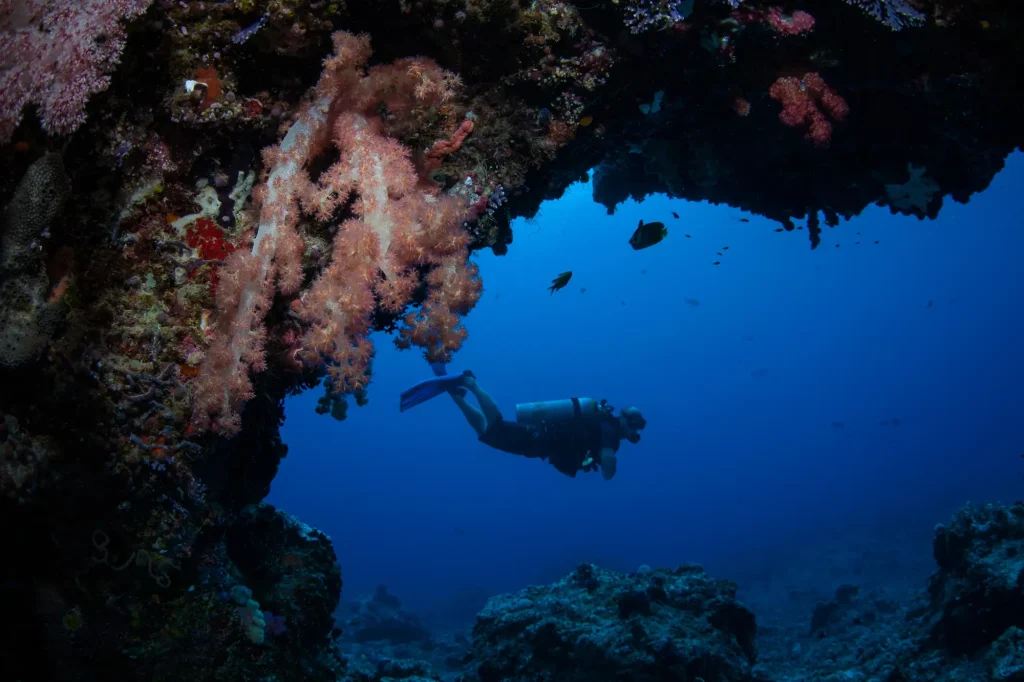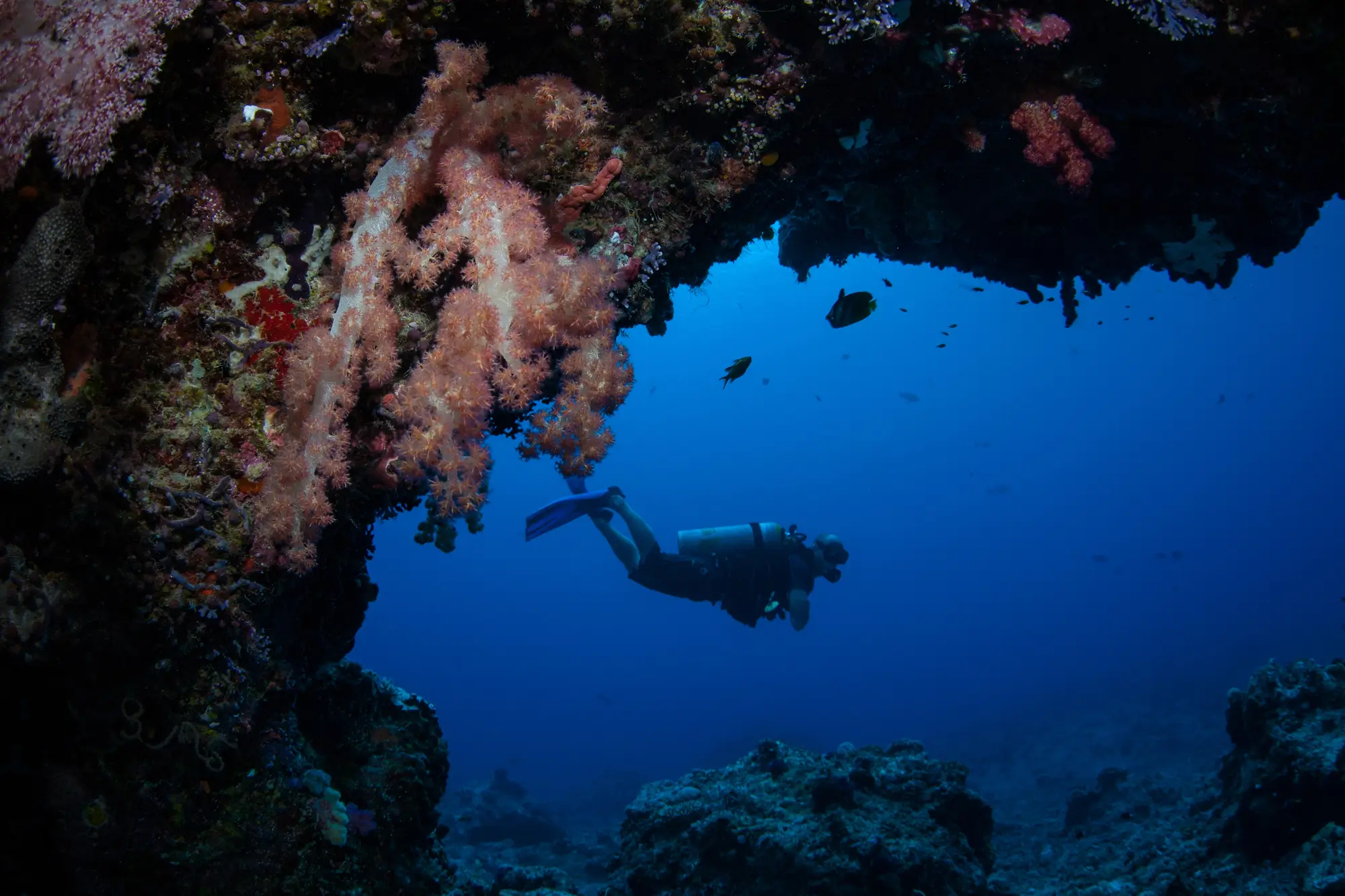Palau Diving: Why Its Shark Sanctuary Is a Must-Dive
Dive into the world’s first shark sanctuary in Palau, where conservation meets adventure. Swim with sharks, explore reefs, and experience eco-diving.

Welcome to Palau, a diver’s paradise nestled in the western Pacific Ocean. Known for its pristine waters and vibrant marine life, Palau has become a beacon for eco-conscious divers.
But what makes Palau truly special is its commitment to marine conservation. This tiny island nation has made waves globally by establishing one of the world’s first shark sanctuaries. So, grab your gear and let’s dive into the wonders of Palau, where every dive supports ocean preservation.
The Shark Sanctuary of Palau
In 2009, Palau made history. It declared its entire Exclusive Economic Zone (EEZ), an area covering 230,000 square miles, a shark sanctuary. That’s roughly the size of France! This bold move means that commercial shark fishing is completely banned in Palau’s waters. The sanctuary protects over 130 species of sharks and rays, ensuring these majestic creatures continue to thrive.
But why sharks? Sharks play a crucial role in maintaining the health of marine ecosystems. They’re apex predators, keeping fish populations balanced and reefs healthy. By protecting sharks, Palau is safeguarding the entire marine food chain.
Divers know that the presence of sharks signals a thriving reef ecosystem teeming with marine life, ensuring an unforgettable diving experience.
The Palau Pledge: A Promise to Protect
When you arrive in Palau, you’ll do more than just show your passport. You’ll sign the Palau Pledge. This unique initiative asks visitors to promise to act responsibly during their stay. It’s stamped right into your passport! The pledge reflects Palau’s deep respect for nature and its desire to share that respect with the world.
The Palau Pledge isn’t just a formality. It’s a reminder that every action, from how you dive to where you eat, impacts the environment. It’s about leaving Palau better than you found it.
Diving with a Purpose: Eco-Diving in Palau
Diving in Palau isn’t just about seeing beautiful fish and coral. It’s about diving responsibly and contributing to conservation efforts. Here’s how you can make your dives count:
- Respect Marine Life: Keep a safe distance from marine animals. Never touch or chase them. Remember, you’re a guest in their home.
- Mind Your Buoyancy: Good buoyancy control helps protect delicate corals from accidental damage.
- Don’t Take Souvenirs: Leave shells, corals, and other natural items where they belong—in the ocean.
Participate in Conservation: Many dive centers offer opportunities to join reef clean-ups or coral restoration projects. Get involved!
Top Dive Sites in Palau’s Shark Sanctuary
Palau is packed with world-class dive sites. Here are a few you shouldn’t miss:
- Blue Corner: Known for its strong currents and abundant marine life, Blue Corner is a thrilling dive. You’ll see schools of fish, vibrant corals, and, of course, plenty of sharks. Hook in, relax, and watch the underwater show unfold.
- German Channel: This site is famous for manta rays. Glide alongside these gentle giants as they visit cleaning stations, where small fish remove parasites from their skin.
- Ulong Channel: Drift diving at its best! The current carries you through stunning coral formations, past schools of barracuda and reef sharks. It’s like flying underwater.
- Peleliu Wall: For experienced divers, Peleliu Wall offers dramatic drop-offs and big pelagic encounters. It’s a chance to see the ocean’s larger residents up close.
Here are some of the species you may encounter while diving in Palau:
- Grey Reef Shark (Carcharhinus amblyrhynchos)
- Blacktip Reef Shark (Carcharhinus melanopterus)
- Whitetip Reef Shark (Triaenodon obesus)
- Scalloped Hammerhead Shark (Sphyrna lewini)
- Tiger Shark (Galeocerdo cuvier)
- Leopard Shark (Stegostoma tigrinum)
- Silvertip Shark (Carcharhinus albimarginatus)
- Whale Shark (Rhincodon typus)
Dive Centers Leading the Way in Responsible Tourism
Choosing the right dive center makes a big difference. Here are three dive centers in Palau that are champions of eco-diving and marine conservation:
- Palau Dive Adventures: They focus on small group dives, ensuring personalized experiences and minimal environmental impact. Their guides are passionate about marine conservation and love sharing their knowledge with divers.
- Fish ‘n Fins: One of the oldest dive centers in Palau, Fish ‘n Fins is deeply involved in environmental conservation. They collaborate with local authorities and researchers to promote sustainable tourism and protect marine life.
- Sam’s Tours: Sam’s Tours is more than just a dive shop. They actively participate in reef monitoring programs and educate divers on how to protect the ocean. Their commitment to the environment shines through in every dive.
How Divers Can Support Conservation Efforts
As a diver, you have a unique opportunity to contribute to marine conservation. Here’s how:
- Join Citizen Science Programs: Participate in initiatives like PADI AWARE’s “Dive Against Debris,” where divers collect and report marine litter. Your data helps scientists track and tackle pollution.
- Spread the Word: Share your experiences and knowledge with fellow divers and friends. The more people know about marine conservation, the bigger the impact.
- Support Local Conservation Projects: Donate to or volunteer with local NGOs working to protect Palau’s marine ecosystems.
- Choose Eco-Friendly Gear: Opt for reef-safe sunscreen and environmentally friendly dive equipment. Every little bit helps.
Why Palau Should Be on Every Diver’s Bucket List
Palau isn’t just about incredible diving. It’s about diving with purpose. Every time you slip beneath the waves, you’re part of a larger effort to protect our oceans. The crystal-clear waters, vibrant reefs, and abundant marine life are breathtaking. But knowing that your dives support conservation makes the experience even more rewarding.
Palau shows us it is possible for a nation to prioritize the environment. However, declaring an area a sanctuary is one thing, enforcing it is another challenge entirely.
Palau’s commitment to protecting sharks and marine life doesn’t stop at policy—it requires constant patrolling, monitoring, and efforts to prevent illegal fishing within its vast waters.
Despite the sanctuary’s legal protections, enforcing these boundaries remains an ongoing struggle for Palau’s authorities.
Final Thoughts
As visitors, ocean lovers, and divers, we play a crucial role. By supporting responsible shark tourism, choosing eco-conscious dive operators, and spreading awareness about the importance of shark conservation, we contribute to keeping Palau’s sanctuary thriving. Every dive, every shared story, and every effort to promote sustainable tourism helps ensure that Palau’s marine environment remains a model for conservation for years to come.
FAQs
Dive depths in Palau vary depending on the site and diver experience. Most recreational dives range between 40 to 100 feet (12 to 30 meters), offering stunning views of coral reefs, diverse marine life, and iconic underwater landscapes. Sites like Blue Corner and German Channel typically stay within this range. For advanced divers, sites like Peleliu Wall can go much deeper, offering dramatic drop-offs that plunge well beyond 130 feet (40 meters). Always dive within your certification limits and consult with your dive guide about site-specific conditions.
Palau is a year-round diving destination, thanks to its warm waters and rich marine life. However, the best time to visit is during the dry season, from November to April. During these months, the weather is more stable, with less rainfall and calmer seas, making for optimal diving conditions. Visibility is excellent, often exceeding 100 feet (30 meters), and you’ll have a better chance of spotting large pelagics like sharks and manta rays. While the wet season from May to October still offers great diving, expect occasional showers and slightly rougher seas.
Yes, Palau can be considered an expensive destination, especially compared to other diving hotspots in Southeast Asia. The cost of living is relatively high due to the island’s remote location and reliance on imported goods. Accommodation ranges from budget guesthouses to luxury resorts, but even mid-range options can be pricey. Diving itself is also costly, with dive packages and liveaboard trips adding up quickly. Additionally, there are environmental fees, such as the Green Fee and permits for specific dive sites. However, the unique diving experiences, pristine marine environments, and commitment to conservation make it worth the investment for many travellers.
